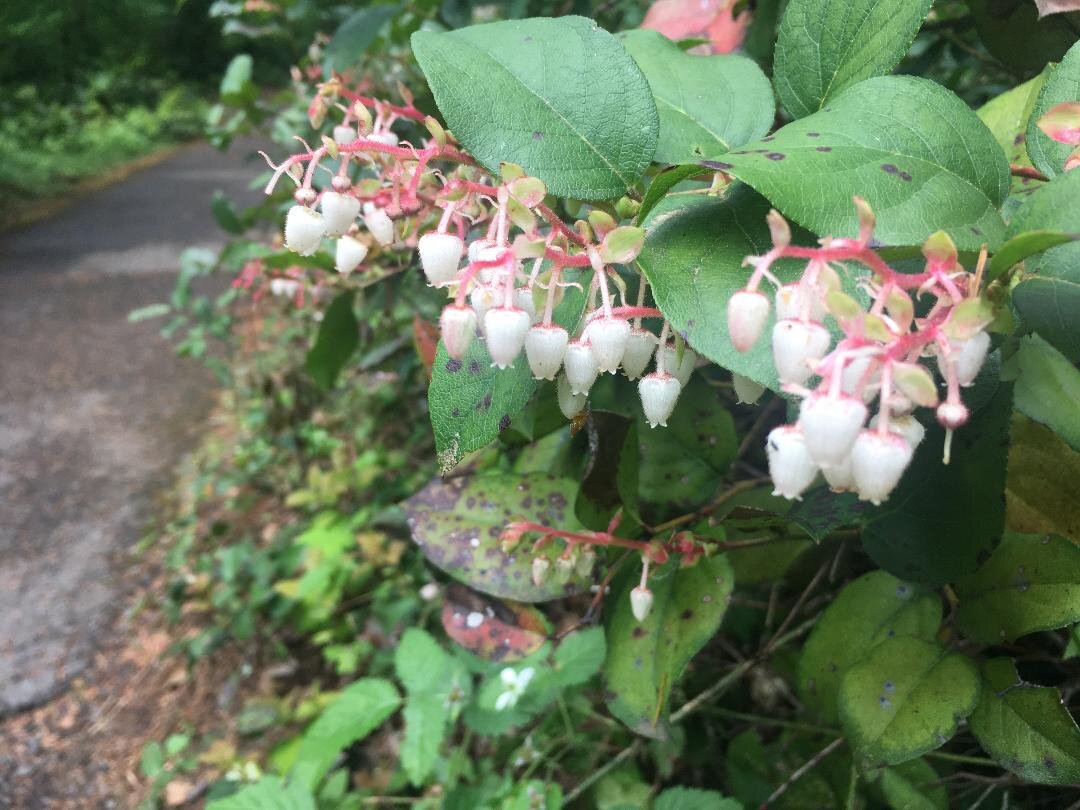Salal (Gaultheria shallon)
Broad petal strawberry (Fragaria virginiana)
Description:
Leaves thin, noticeably blue-green, without hairs on upper surface, divided into 3 leaflets on short stalks, each toothed from middle to tip, central tooth shorter than its neighbors.
Leaf veins not prominent, as in F. vesca.
Flowers often 1 per stem, which does not exceed height of leaves; petals almost round, white or slightly pink.
Fruit succulent, palatable.
Grows in openings in woods, stream banks, meadows, from near coastline to sub-alpine zone.
Rarity: Common
Flowering Time: Late Spring
Life Cycle: Perennial
Height: 1--5 inches
Habitat: Meadow, West-Side Forest, East-Side Forest
Found In: Olympic Np, Mt. Rainier Np, N Cascades Np, Crater Lake Np, Wallowas, Steens, Siskiyous, West Gorge, East Gorge
Native: Yes
Source: Wildflowers of the Pacific Northwest
Additional Resource: OregonFlora Project
Salmonberries (Rubus spectabilis)
Rubus spectabilis
These orange aggregate berries are commonly found throughout the park. They are edible to both wildlife and humans, though the opinions on flavor vary greatly. If you decide to taste them for yourself, pick a few from several different plants as the taste can differ from plant to plant. Personally, I find they taste like bland tomatoes more often than not.
Thimbleberry (Rubus parviflorus)
Rubus parviflorus
Thimbleberry plants are sometimes referred to as the “toilet paper of the forest” for their large soft leaves. The delicate red aggregate berries are edible and plentiful at Silver Falls. A nice trail-side snack!
All those pretty white blossoms will soon be berries!










